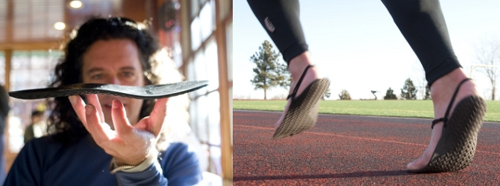No laces to tie. No upper to protect my toes. Just a 6mm buffer between my skin and the ground. That was the proposition as I slipped a thin pad of rubber under my foot and went for a run.
Xero Shoes were invented by Boulder, Colo., resident Steven Sashen to mimic the old-school huaraches footwear worn by the Tarahumara of Copper Canyon, Mexico.

If you haven’t read Christopher McDougall’s book “Born To Run” the short story is that the Tarahumara are Native Americans renowned for their distance running prowess. The book, which lauds the benefits of barefoot-style running, was clearly influential in the proliferation of minimalist shoes.
The Xero sandals are at the extreme end of the “barefoot” footwear spectrum. They are light and flexible. They bend and curve over everything on the ground and transfer that shape directly to the wearer’s foot.
The company tag line of “feel the world” is definitely apt.
Running in the sandals reminds me of streaking through the forest — it’s awesome, good fun, exhilarating and natural. . . until something goes horribly wrong.

I haven’t stubbed my toes too badly in the sandals yet. Given enough miles, I expect that an unpleasant foot-bashing will be inevitable.
Sashen said you learn to pick up your feet and watch where you step when wearing the sandals. I suspect he is right. These shoes train you to run more aware of what’s ahead.
Xero Shoes are very close to actually being barefoot and provide pretty much no support. I have strong feet and enjoy the sensation but also note each pebble and root that I cross.

Because of the sensitivity, the Xero Shoes can be a training tool for runners who want to improve their form and encourage a mid-foot stride. They are by no means everyday training shoes, though.
I’ve run in the Xeros a few times, with my longest distance about 3 miles. This is probably the longest that I will ever run in them; they are not good for any distance longer than that, for me at least.
The inventor said the sandals are mostly a training tool for short distance form work.
Beyond running, they are fine for hiking, walks, and day-to-day wear if you want to rock the Tarahumara aesthetic.

At a quick glance, they look like normal flip-flop sandals, though when you walk there is no “flop” action, which is nice. They stay tight on the foot.
What about that cord between the toes. . . doesn’t it rub, you may ask? Not really. The cord is pretty comfortable if set up right, although you do notice it at first. I didn’t mind it much at all and there was no chafing even up to the 3-mile distance.
The sandals come either as a kit that includes rubber bottoms and cord to tie your own straps, or they come for a few more bucks pre-tied and ready to wear.
I visited the Xero factory in Boulder and Sashen helped me create my own pair of sandals. The process is pretty easy. Anyone with decent knot skills shouldn’t have trouble.
Xero Sandals cost $24.95 for a kit, and they start at $39.95 for custom-tied sandals from the factory. Buy them online here.

In the end, even for the most hardcore “barefooter” it’s not likely that these shoes will take the place of your every day shoe, especially if you run more than a couple miles at a time.
However, I would use these on short training days maybe once a week to help improve form, reinforce barefoot running style, and strengthen my feet with a goal to try and run more like the Tarahumara did.
—Sean McCoy is a contributing editor based in Denver.






